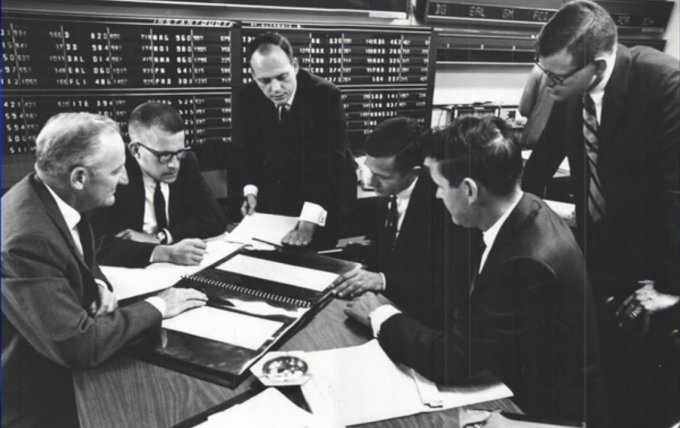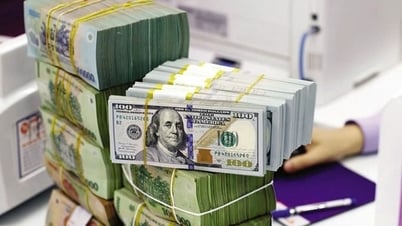William J. O'Neil, who died last week at the age of 90, was not only a good fund manager but also willing to share the details of how he successfully made money with many other investors.
The father of the CANSLIM investment method, William J. O'Neil, passed away on May 28 at his home.
He was born in Oklahoma and grew up in poverty in Texas. O'Neil's father abandoned the family when he was a boy, and it was the support of the remaining members that motivated O'Neil to work hard.
He began his career as a stockbroker at Hayden, Stone, & Co in Los Angeles (USA) in 1958. As he built his client list and investment portfolio, he realized that data analysis was the key to investment success.
The early 1960s were a pivotal time in O'Neil's career. He made outsized gains in the stock market over the next two years by focusing on just a few stocks, including automaker Chrysler and birth control maker Syntex, as well as shorting discount department store chain Korvette, a company that was a stock market phenomenon at the time.
A year later, in 1963, at age 30, O'Neil became the youngest person to buy a seat on the New York Stock Exchange (NYSE). Owning a seat on the NYSE then meant being able to trade on the floor as a broker or trader for one's own personal account. The cost of a "seat" on the NYSE ranged from $3,000 in the mid-1800s to $3.575 million at the end of its heyday in 2005.

William O'Neil - one of the legends of the investment world - passed away on May 28, at the age of 90. Photo: William O'Neil & Co
Jack Schwager - a famous author of many articles and books on stock investment - called O'Neil "a true wizard of the stock market".
In 1963, O'Neil founded William O'Neil Co., which developed the first digitized daily stock database, tracking more than 70,000 companies worldwide . In its early stages, William O'Neil & Co. managed money for clients with a minimum capital of $75,000. For investors who did not have that amount, he established another investment fund in 1966. After two years, this investment fund had total assets of $10 million.
O'Neil's fund returned 116% in 1967 and was the best-performing mutual fund of that year, according to FundScope . However, he couldn't maintain the performance and eventually sold the fund in 1975. The fund's total assets had fallen to $6 million, from a peak of $49 million, according to the Los Angeles Times .
In 1992, O'Neil launched another fund called New USA, which quickly raised $170 million. By 1996, the fund had returned 67% since its inception, far outperforming the S&P 500. In 1997, he sold the fund to MFS Investment Management.
O'Neil's success is not only in the aspect of investment management. He is also famous for many books on stocks, the most prominent of which is "How to Make Money in Stocks: A Winning System in Good Times or Bad". In this book, O'Neil introduced an investment method created by himself called CANSLIM, combining 7 basic and technical factors in choosing potential stocks that is still the standard of value investors.
CANSLIM is an acronym that represents 7 factors to find potential businesses, including C - quarterly earnings, A - annual earnings growth, N - new products, management and innovation, S - law of supply and demand, L - business position, I - institutional investors and M - market trends.
Using this method, he looks for companies that have quarterly earnings growth of at least 25%, and annual profits growth of at least 25% for three consecutive years. In addition, the company must have new products, services, and management; breakthrough prices; leading stocks in the industry; have institutional investors and are on an upward trend.

William O'Neil and Co. in 1960. Photo: William O'Neil & Co.
In the 1980s, O'Neil and his partner David Ryan held more than 150 seminars across the United States to teach investors about the principles of value investing, through this method.
Although this is a method created by O'Neil, he prefers not to call it his own personal method but rather says CANSIM is what the market teaches those who want to pick and profit from game-changing stocks.
“Is there any successful investor who can share the details of how he did it?” asked Chris Gessel, content director of Investor’s Business Daily, when asked why O’Neil has earned the respect and decades-long loyalty of his employees, clients, and fellow investment professionals.
In addition to writing books , O'Neil had the idea of creating a financial newspaper that could compete with the big names in the industry at the time, such as the Wall Street Journal. This thinking began on a flight with the company's executives.
In 1973, O'Neil founded a printing company, O'Neil Data Systems, which quickly became known for providing large-format charts to clients in the mutual fund, insurance, and investment advisory industries. O'Neil called these thick, maroon-colored books Datagraphs. He then launched an online research tool called WONDA—short for William O'Neil Dynamic Access—that provided a comprehensive view of the stock market, industry groups, and individual stocks.
The combination of a successful printing company and a unique quantitative stock database resulted in the first publication of Investor's Business Daily in April 1984. The daily became a weekly print newspaper in 2016. The company even expanded into digital with two equally popular names: Investors.com and MarketSmith.
To friends and many employees who worked at one of William O'Neil's companies, he was best known as Bill. For many years, Bill O'Neil kept a modest office just outside the Investor's Business Daily newsroom and chatted with employees almost daily.
At its peak, Investor's Business Daily had over 300,000 paying subscribers. In May 2021, the paper was acquired by WSJ News Corp.'s parent company for $275 million.
Minh Son ( according to Investor's Business Daily, Bloomberg )
Source link































































































Comment (0)